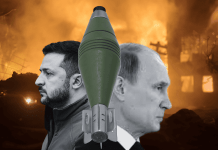US President Donald Trump spoke at Fort Mayer in Arlington, Virginia, with a special appeal “to the army and the American people” on August 21. In his speech, the president outlined a radical change in the US approach to Afghanistan. What are the most important provisions of Washington’s new strategy and how it differs from the approach of the previous administration?
More US Military in Afghanistan
As Fox News reported an hour before the speech of Donald Trump at Fort Myer, the president decided to increase the American military contingent in Afghanistan by 4,000 people. This information was indirectly confirmed by the US Secretary of Defense James Mattis. “I instructed the head of the US Joint Chiefs of Staff [Joseph Dunford] to begin preparations for the implementation of the president’s strategy, I will be in contact with the NATO Secretary General [Jens Stoltenberg] and our allies, some of whom are also committed to increasing the troop strength [in Afghanistan] “- said Mattis. As of August 2017, there are 13,000 servicemen of the international coalition in Afghanistan, of which 8,400 are American soldiers and officers.
Situation Based Approach
More Authority
Perhaps the most important point of the new strategy is the expansion of the powers of the American contingent. First of all, this concerns anti-terrorist activities in the region. “We will expand the powers of the US military to fight terrorist and criminal networks,” Trump said, adding that “micromanagement from Washington” would not lead to a victory over terrorists in Afghanistan.
Refusal to “build democracy”
Focus on Regional Cooperation
No Pre-Conditions for Dialogue
Another aspect of Washington’s new strategy was no longer the president, but Secretary of State Rex Tillerson. “We are ready to support peace talks between the Afghan government and the Taliban without any preconditions,” he said. Similar statements were made also by the administration of Barack Obama, but during this time the Taliban’s power in Afghanistan only strengthened. According to the findings of the US Department of State inspector on reconstruction in Afghanistan, John Sopko, the authorities in Kabul in November 2015 kept under full control 72% of the country’s territory, and by November 2016 this figure was reduced to 57%.




